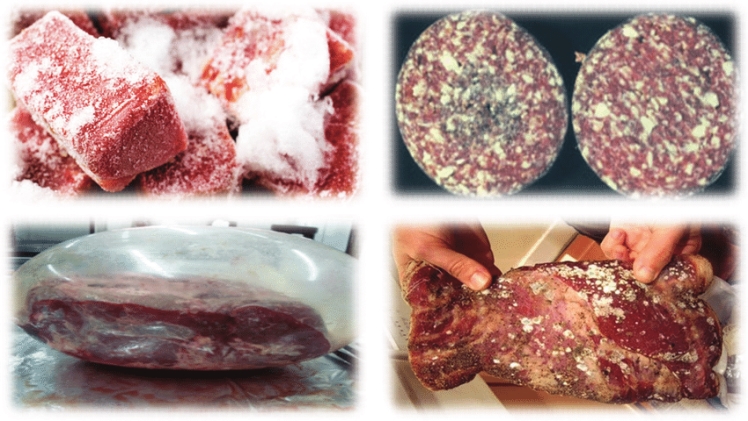The genera of bacteria often found on fresh and spoiled meats and poultry are listed in Table 4–1. Not all of the genera indicated for a given product are found at all times, of course. Those that are more often found during spoilage are indicated under the various products.
In Table 4–2 are listed the genera of yeasts and molds most often identified from meats and related products. When spoiled meat products are examined, only a few of the many genera of bacteria, molds, or yeasts are found, and in almost all cases, one or more genera are found to be characteristic of the spoilage of a given type of meat product The presence of the more-varied biota on nonspoiled meats, then, may be taken to represent the organisms that exist in the original environment of the product in question or contaminants picked up during processing, handling, packaging, and storage. The question arises, then, as to why only a few types predominate in spoiled meats.
It is helpful here to return to the intrinsic and extrinsic parameters that affect the growth of spoilage microorganisms. Fresh meats such as beef, pork, and lamb, as well as fresh poultry, seafood, and processed meats, have pH values within the growth range of most of the organisms listed in Table 4–1. Nutrient and moisture contents are adequate to support the growth of all organisms listed.
Although the O/R potential of whole meats is low, O/R conditions at the surfaces tend to be higher so that strict aerobes and facultative anaerobes, as well as strict anaerobes, generally find conditions suitable for growth. Effective levels of antimicrobial constituents are not known to occur in products of the type in question.
Of the extrinsic parameters, temperature of storage stands out as being of utmost importance in controlling the types of microorganisms that develop on meats, as these products are normally held at refrigerator temperatures. Essentially all studies on the spoilage of meats, poultry, and seafood carried out over the past 50 years or so have dealt with low-temperature-stored products. With respect to fungal spoilage of fresh meats, especially beef, the following genera of molds have been recovered from various spoilage conditions of whole beef:
Last Speech
Thamnidium, Mucor, and Rhizopus, all of which produce “whiskers” on beef; Cladosporium, a common cause of “black spot”; Penicillium, which produces green patches; and Sporotrichum and Chrysosporium, which produce “white spot.” Molds generally do not grow on meats if the storage temperature is below 5◦C.116 Among genera of yeasts recovered from refrigerator-spoiled beef with any consistency are Candida

